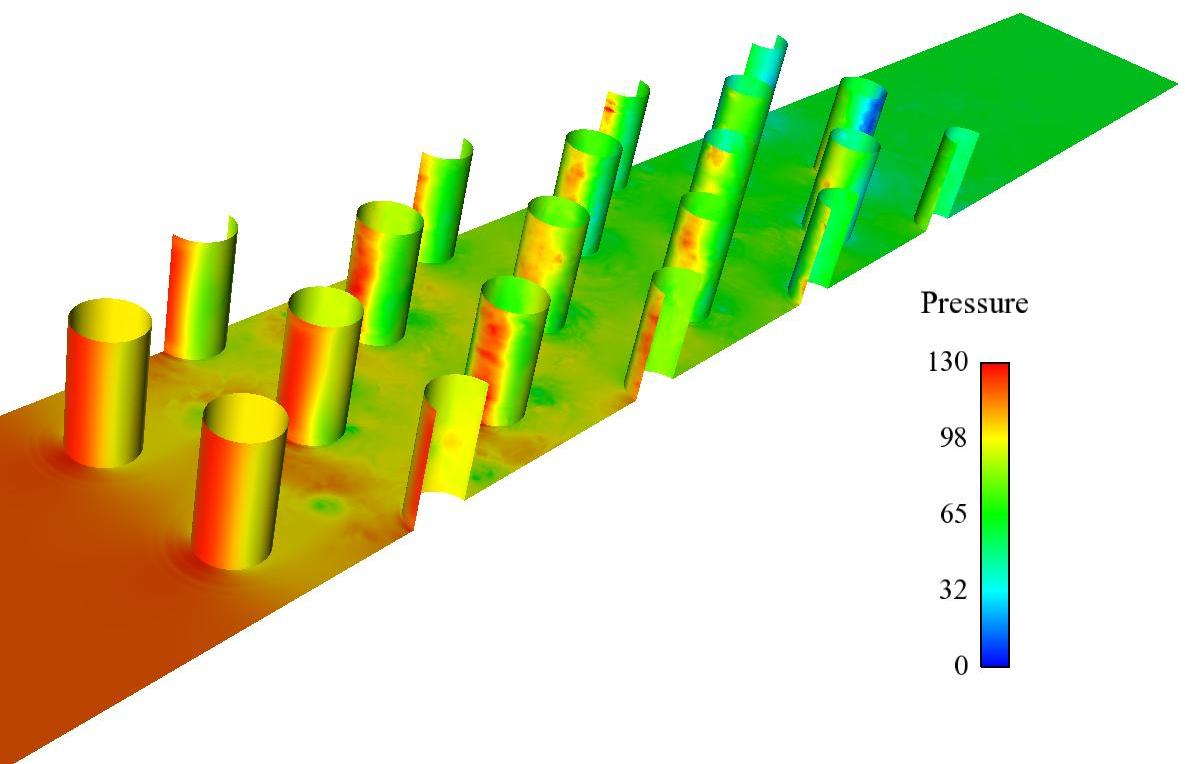Abstr:UFR 4-18: Difference between revisions
m (moved Lib:UFR 4-18 to Abstr:UFR 4-18) |
|
(No difference)
| |
Latest revision as of 11:03, 18 December 2015
Flow and heat transfer in a pin-fin array
Confined Flows
Underlying Flow Regime 4-18
Abstract
The test-case consists of the flow through a wall bounded pin matrix in a staggered arrangement with a heated bottom wall. In addition to its interest for the complex underlying physics, this case is close to several industrial configurations found in internal cooling of gas-turbine blades, electronic devices and can be also found in the nuclear field.
Ames et al. (2004, 2005, 2006, 2007), carried out a fairly extensive experimental study for a particular configuration: the incompressible flow through a confined staggered pin fin array with a pitch to diameter ratio of 2.5, at three Reynolds numbers (3000, 10000, 30000) and with a heated bottom wall in the forced convection regime. Figures 1 to 3 show various instantaneous quantities in order to illustrate the complexity of the flow.
This configuration has been chosen as a test case in the framework of the 15th ERCOFTAC-SIG15/IAHR Workshop on “Refined Turbulence Modelling” organized by the ERCOFTAC Special Interest Group on Turbulence Modelling (SIG15). This workshop took place at the EDF Lab Chatou (France) in 2011.
Mainly EDF R&D has contributed to the benchmark exercise of the present test case through calculations with various models (LES and URANS). These calculations are presented herein and compared with the Ames et al. experimental results. Some observations from pre-workshop calculations of Delibra et al. (2008, 2009, 2010) are also included.
Of primary interest in this case is the Nusselt number distribution on the bottom wall. However, pressure drop, mean-velocity components and turbulence quantities are also of interest and are compared to available experimental data.
Best practice guidelines are given for computing the considered test case with maximum confidence.
Acknowledgements
The author would like to acknowledge F. Ames for providing the experimental results and W. Rodi for his thoughtful review.

Figure 1: Intantaneous view of the pressure field on the pins and the bottom wall (LES, M76, Re=10000)

Figure 2: Intantaneous view of the stream-wise velocity field (LES, M76, Re=10000)

Figure 3: Intantaneous view of the temperature field (LES, M76, Re=10000, imposed heat flux)
Contributed by: Sofiane Benhamadouche — EDF
© copyright ERCOFTAC 2024
